Sectional vs Sofa — Which Is the Better Seating Choice for Your Living Room?
Depending on your style, lifestyle, and the size of your space, you might prefer a sofa over a sectional, or vice versa. Here's how to decide
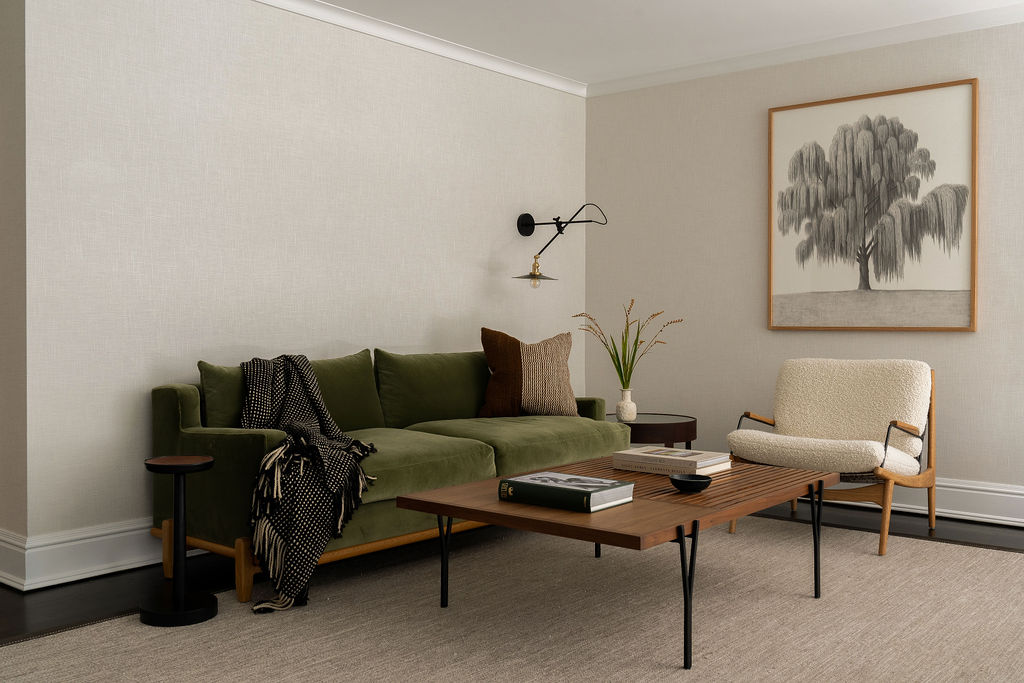

It's an age-old design dilemma when it comes to buying a couch for your living room: sofa vs. sectional. Should you stick to a standard three-seater or go the roomier sectional route?
The truth is, there is no magic answer to that question. The best sofa for your living room and lifestyle could be different than the best sofa for someone else. Deciding which is the right choice for you comes down to a few basic questions: What's your budget? What's your lifestyle? Is your home the go-to for parties and movie nights? The list goes on.
Below, I've laid out the differences between sectionals and sofas in all the ways that matter, including size, price, and perhaps most importantly, expert opinion. Indeed, a few interior designers will weigh in, offering their tried-and-tested tips for deciding between these two popular seating options. And to help you further down your decision-making journey, I even added a few shopping options along the way.
The difference between a sectional and a sofa
A sofa is defined by its straight (or sometimes curved) shape and linear cushion arrangement. The three main offerings are loveseats (two people), three-seaters (three people), or a single-cushion design that can seat two to three people, depending on the sofa's length. "A sofa is a longer upholstered seat made as a single frame with a back and arms on the sides.," explains Andrea Lackie of Andrea Lackie Design.
A sectional, on the other hand, is configured differently than a sofa (and it's usually larger). It typically "has a chaise return in addition to the singular back, or even multiple returns depending on the configuration," adds Courtney Sempliner, owner of Courtney Sempliner Designs. The most common configurations are chaise sectionals, U-shaped sectionals, or L-shaped sectionals.
- Chaise sectionals: a two or three-person sofa with an attached chaise on either the left or right side
- U-shaped sectionals: a two or three-person sofa with longer arms or chaises on either side; its shape forms the letter "U"
- L-shaped sectionals: a two-person sofa is joined with a three-person sofa at a right angle thanks to a connecting corner cushion; its shape forms the letter "L"
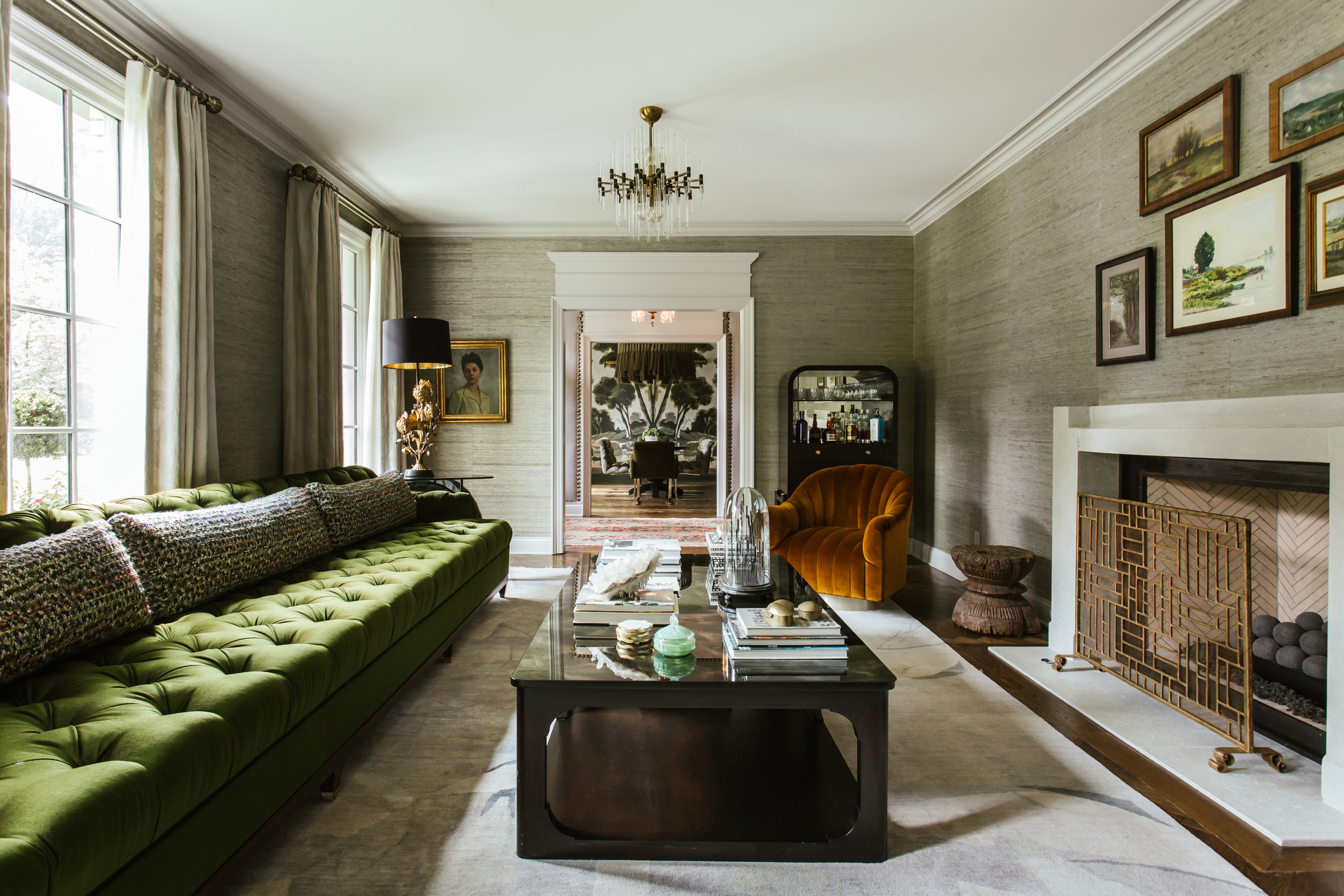
How do I know which to buy: a sofa or a sectional?
Personal preference aside, a sofa might be the right choice for you depending on the following:
Price: Because they are smaller, sofas are typically less expensive than sectionals. If you're working with a smaller budget, a sofa-accent chair vignette might make the most sense.
Lifestyle: Do you have a large family? Do you gravitate to the couch for lounge sessions and hang-out time? If the answer is "no," you might not need something as large as a sectional. Just one loveseat or three-seater might do the trick. (Or, you could try a combination of the two to build the same seating capacity as a sectional.) "It is best to use a sofa when you have limited space or want a more formal setting," Andrea says. "Additionally, a sofa is a good choice when you want a more fluid furniture plan where the sofa could be paired with chairs or poufs." A sectional, however, is best for "more casual, informal spaces." where you're looking to curl up, get comfy, and relax. Courtney adds.
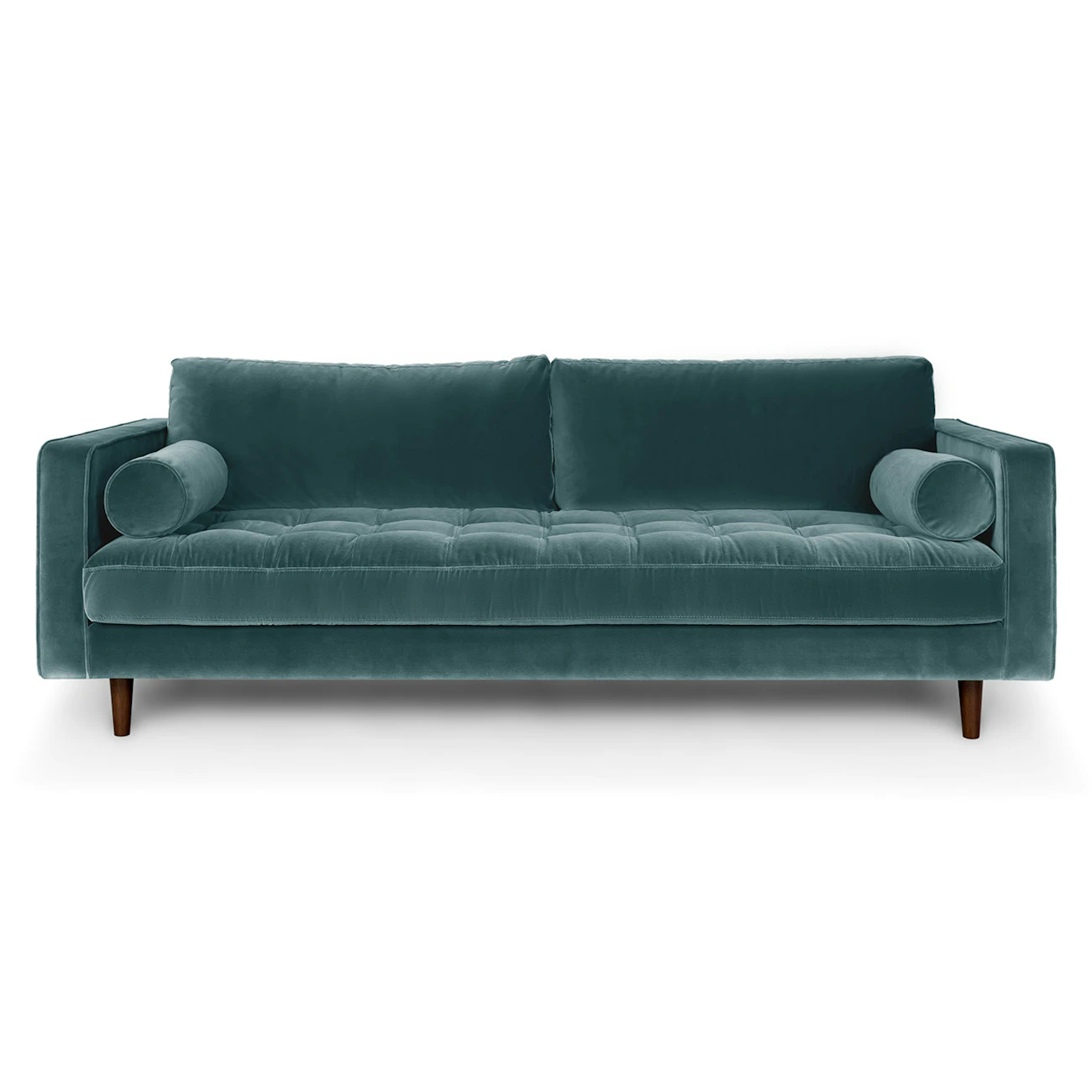
Price: $1499
Size: 34"H x 88"W x 38"D
Without in doubt, Article sofas are my go-to. Although I didn't have this one exactly, I did own a green velvet three-seater for three of my six years living in New York. It held up excellently over time, and my roommates and I weren't exactly nice to it. It survived myriad long-term house guests, cabernet spills, errant food marks, and lots of lounging, all while looking fresh and feeling comfortable. After a quick look through Article's website, I'd say this is the closest alternative available now.
If you don't believe me, hopefully almost 2000 reviews and a 4.6-star average rating will convince you. The piece looks just as chic in buyer photos as it does in the product listing, which includes both the sofa dimensions and the dimensions of the box it comes in to ensure you're not stuck with a couch that's too big for your door. Customer service seems top-notch too; one customer said that when their first couch arrived damaged, Article immediately sent a replacement. From a style perspective, the Sven's mid-century look frame meets maximalist upholstery is the perfect combination of classic and current. It's formal, sure, but it's also funky and unorthodox.
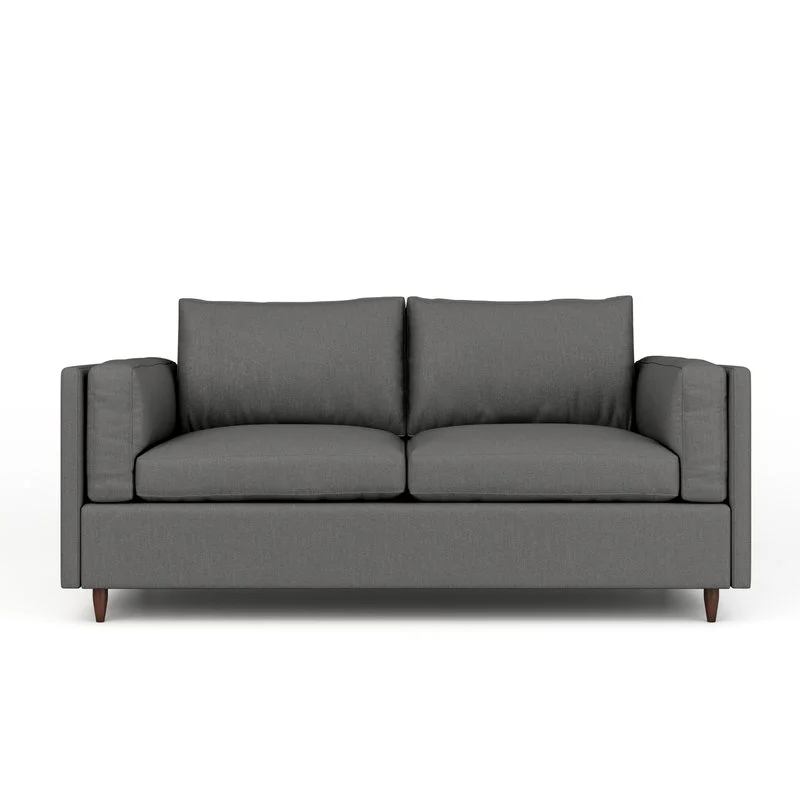
Price: $5908
Size: 36" H x 40" D x 56" - 75" W
Mackenzie Collier of Mackenzie Collier Interiors recommends Benchmade Modern for its "craftsmanship and American-made quality." Not to mention, it has also been featured in the likes of Forbes and Wirecutter where, in many instances, this "Skinny Fat" loveseat got called out.
Aesthetically, this sleeper sofa is extremely minimalist and therefore easy to place anywhere; ideal for something so expensive. Cushion and frame material information is easily accessible, so you can better parse marketing speak from actual product benefits. The sofa looks fabulous in customer photos, and 100% of reviewers said they'd recommend it.
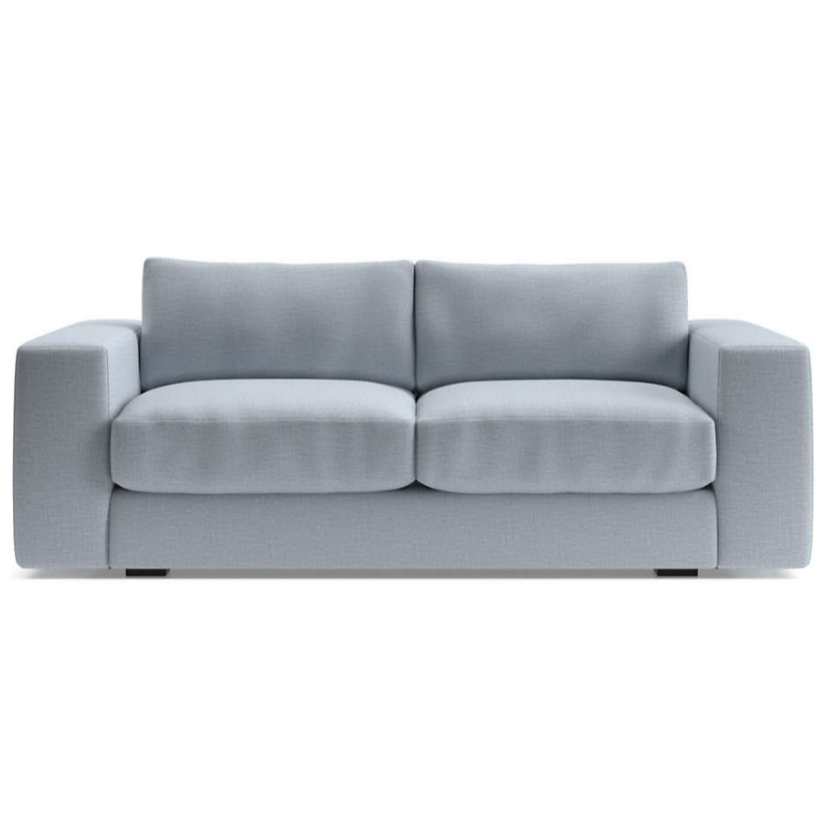
Price: $1999
Size: 77.5" W x 39.5" D x 23" H
Erin Schwartz, a decor writer for The Strategist, ranked the Oceanside from Crate and Barrel as their favorite sofa overall in a roundup of "The 12 Very Best Couches." They described it as reasonably priced and well-sized, and noted that the cushions were some of the comfiest they had encountered during their testing. While Erin tried a model upholstered in the performance fabric Ascend in ivory, the one shown here is the blue/gray colorway called Harbor.
Stylistically, I like the Oceanside's barely-there legs and low profile. It's very modern and trendy, but not quite right for someone with bad knees — so take heed, former runners. From a construction standpoint, I'm inclined to trust Crate and Barrel; they're genuine, bonafide furniture makers and always have been. There is no grabby Instagram marketing or TikTok shenanigans — you know what they're about. Construction-wise, I love that the frame is kiln-dried engineered hardwood (strong and durable) and that the joinery is mortise-and-tenon — two solid quality benchmarks, according to the experts I've spoken with. Something else that stood out? The cushions are wrapped in a special ticking fabric designed to keep the down feathers in place "while maintaining shape and comfort over time."
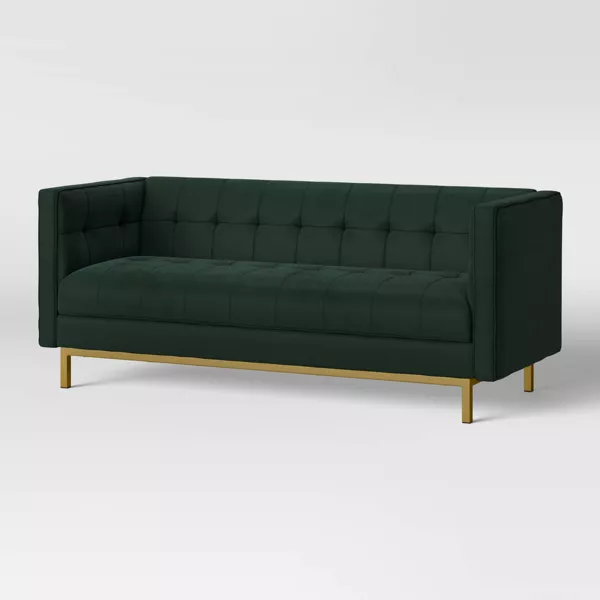
Price: $650
Size: 30" H x 73.5" W x 30.5" D
We can't forget about Target for trendy, quick-delivery pieces at great price points. The retailer's Threshold line is a trove of stylish finds, including some solid, affordable sofas.
With a quick search, I found this tuxedo-style tufted sofa, well-priced at under $700 and upholstered in a luxurious green velvet. The seat depth sits at 21.5", which should suffice for an average-sized male or female — about 5'6" and 5'2" respectively. Best of all, delivery from and returns to Target are almost always a breeze. The one con I'll flag, according to reviews? Assembly sounds a bit difficult, and I wouldn't be shocked if the screw holes didn't line up perfectly.
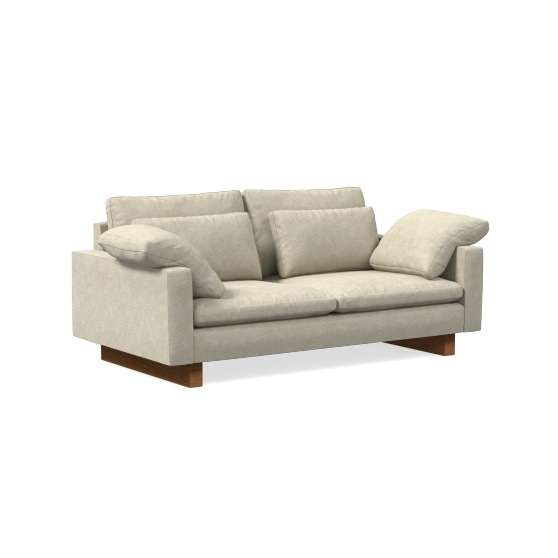
Price: From $1599
Size: From 76" W x 36' D x 35" H
The Harmony was also included in the aforementioned Strategist article, where it earned the title of "best less-expensive fabric couch." A sectional sleeper sofa from the same product line was included in a similar couch best-of for The Spruce. In the former, Erin described the Harmony as "highly customizable" and "highly versatile" at a "lower price than many other sofas with the same qualities" — a hardwood frame, sinuous springs, etc. High praise, for sure. The Spruce, meanwhile, described the sectional version as both plush and cozy — two qualities I'd expect the loveseat would also have.
In other words, if you're looking for something to sink into, the Harmony should strike all the right notes. On a scale of 1 to 5, 5 being the firmest, the seats on this couch are a 1. And good news for buyers in tight quarters — or just those of us partial to a low profile — the legs are removable.
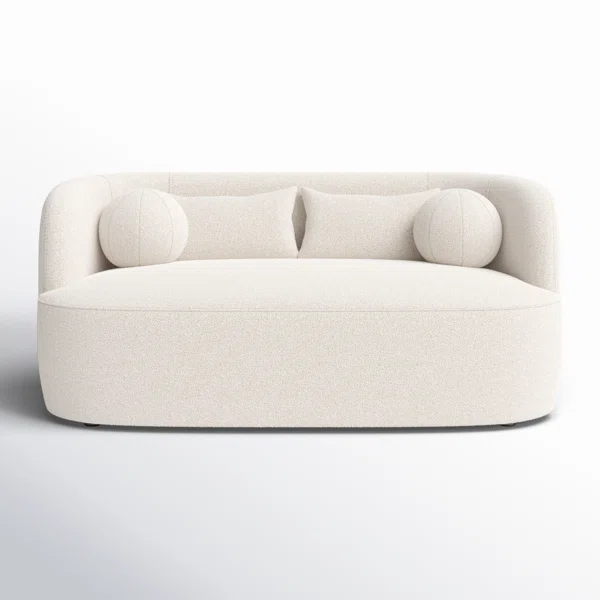
Price: $779.99
Was: $889.99
Size: 29.5'' H X 68'' W X 35.8'' D
Though reliable and varied, Wayfair's thousands-deep SKUs can be a bit overwhelming to navigate. But the good news is I've found the reviews to be a pretty reliable way of cutting through the noise. With this lovely curved white sofa, we're starting off strong — an extremely impressive 4.8-star average across 76 ratings. Immediately, I'm hooked (and not just because I love the look of this beauty, which claims to be a great couch for small living rooms).
Further investigation reveals this is a "Wayfair Verified" product, meaning that it was vetted and inspected against a 20+ point quality checklist by a Wayfair Product Expert. That definitely inspires confidence. Now I know this isn't exactly cheap, but to be honest, a piece like this could cost double or even triple the regular ticket price at a luxury retailer. Buy now at this excellent markdown, or better yet, wait for a larger Wayfair sale (Black Friday isn't that far off ...) for what might be an even better discount.
Aesthetics: Generally speaking, there is less variation or room for customization in the sectional market. You probably won't find one upholstered in a funky material or accented with unique hardware. This is going to take up a lot of your living room real estate, so you might not want something so flashy, after all — but if you do, a combination of sofas might be more your speed.
Longevity: As online interior design service Homzie points out on its blog, sectionals don't "grow well with you." If you move, it's unlikely your sectional is something you're going to take along with you, since they tend to be configured to the size of the room you purchased it for. Homzie's experts recommend skipping a sectional if you plan to move in the next 5 to 7 years.
Traffic Flow and Space: "A sectional works great in a corner as it fills the room and can avoid any dead-end corner space," adds Silvia Roldan, lead designer at the Stylesmiths. "Sectionals can also help close off a low-traffic area of a room." That said, they can block traffic, too. Make sure your sectional won't close off the room so much that it becomes cumbersome to move through the space.
Intended Use: Another great tip from Homzies — if you like to eat and drink on your couch, ensure you can easily access your coffee table from the sectional you're considering. If the answer there is no, you might prefer loveseats/three-seaters flanked by side or drink tables instead.
Room: If you're furnishing a rec room or basement — a multifunctional space with various sections to lounge and entertain — a sectional is great. For your front room, though — an area meant more for conversation than relaxing? Sofas. "Whereas a two or three-seater sofa is designed more for a small living space or more formal sitting room, corner sectionals are ideal for TV rooms, dens, basements, etc. — wherever you see yourself watching movies and TV, lounging, relaxing, potentially napping, etc," says Heather Goerzen, lead interior design at Havenly. "Due to the extra seating space, they’re great for larger families or people who love to host."
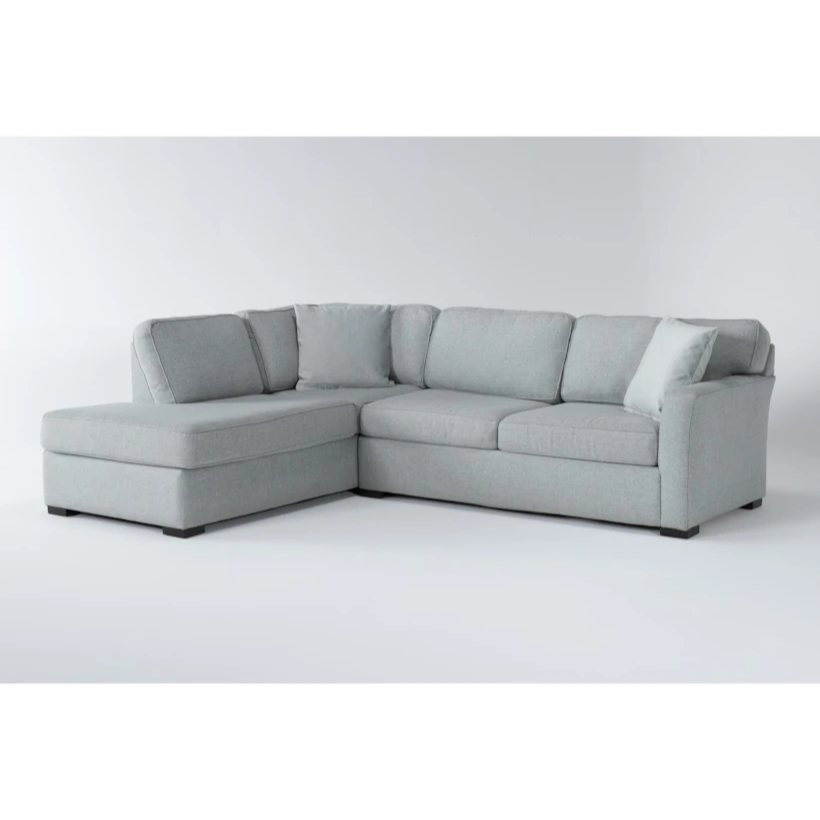
Price: $1595
Size: 108"W x 83"D x 31"H
I bought this L-shaped sectional back in June and am loving it so far. It's quite comfortable, with the perfect seat depth and height, and I found the price to be very fair for a sectional this size. There are lots of upholstery options, so I was able to find one that worked for my space. And though it took a few weeks to arrive, delivery went off without a hitch. It's hard to speak on longevity just yet, but I'm pleased for now. My only qualm: the cushion on the corner seat sometimes sinks deeper than the others, but this is easily fixed with a quick adjustment.
Assembly was an absolute breeze — it took maybe 10 minutes, tops. Looks just like the pictures, too.
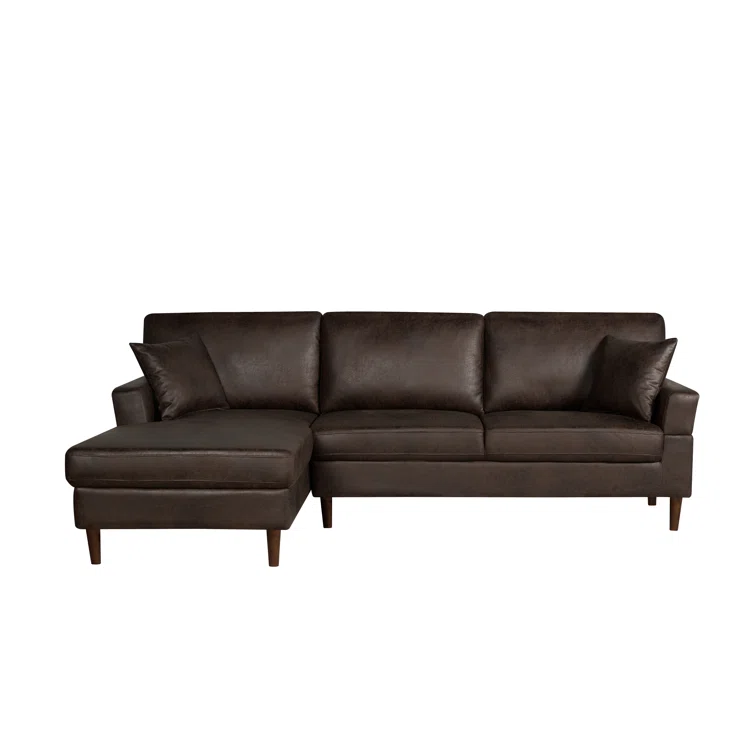
Price: $359.99
Was: $859.99
Size: 36.2'' H X 97.6'' W X 63.3'' D
My style editing counterpart, Julia Demer, can't track down the exact Wayfair leather sectional she ordered three years ago, but she insists this 2-piece option from Ebern Designs is the closest she could find — at least from an aesthetics point-of-view. There aren't many reviews here, but all three are generally positive. And while the sectional is also available in a camel faux leather, I quite like this dark chocolate brown. Use it for contrast in an otherwise colorful room, or style it with some brighter, patterned pillows for a perfectly juxtaposed look.
Reviewers are satisfied with their purchase, but note that the quality, while satisfactory, correlates with the price (that is to say, this doesn't compare to a better-made, luxury option, but it gets the job done).

Price: $5296
Size: 118.5"W x 79"D x 28"H
My colleague Barri Grossman evangelized this white sofa despite an 11-year-old son and a dog at home. "It's so comfortable yet stylish and has kept pretty clean and white considering the high-traffic room it's in," she told me. And "because it's modular you can [customize the] size and shape to fit your room." The only drawback? "The pillows lose shape easily so we're constantly needing to fluff and reset them."
It sounds like lots of people agree with Barri — according to Crate and Barrel, this is a best-seller. And you don't have to commit to the white fabric if it scares you; just try one of 211 different upholsteries instead. "So comfortable and large," one buyer wrote. "Love how you can remove the back pillow for an even deeper seat and the back is still so soft. The most comfortable couch I have ever sat on by far."
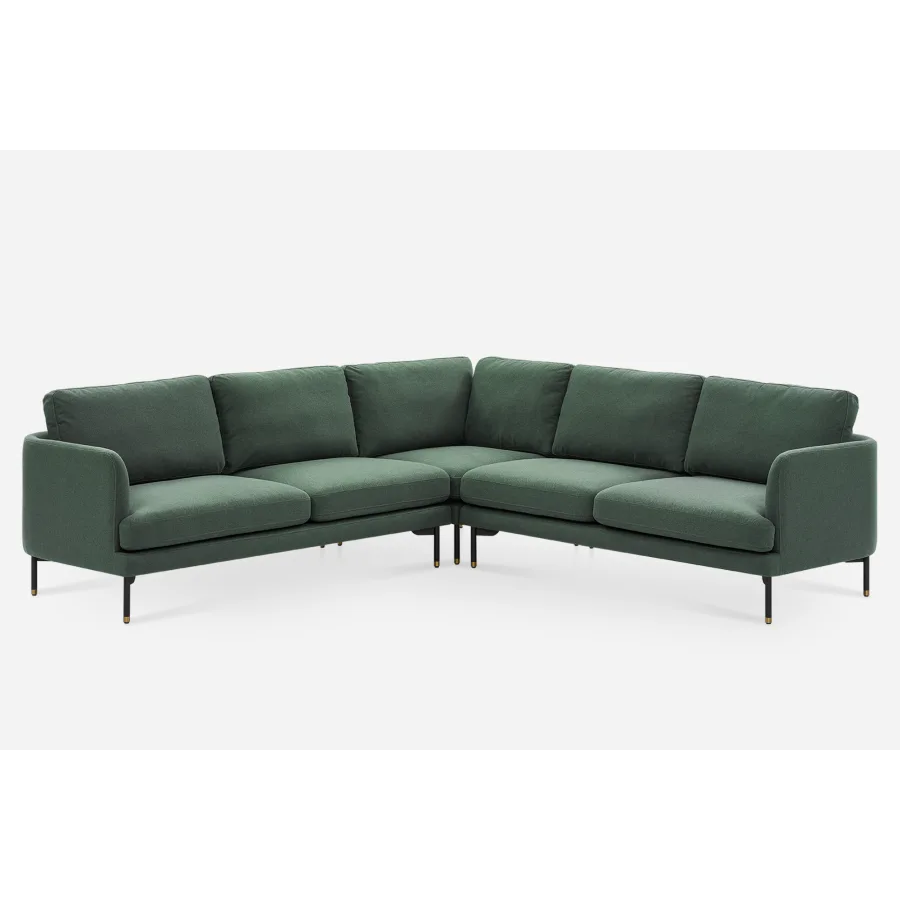
Price: $2379
Was: $2799
Size: W102.4" x D102.4" x H32.3"
This L-shaped sectional is a bit of a unicorn. It's fairly priced, seemingly well-made (plywood frame; sinuous spring suspension; removable, washable cushion covers; and foam and pocket coil-filled seats), and quite stylish to boot. Not to mention it looks genuinely comfortable. I have never tried a Castlery sofa myself, but I've been continually impressed by the brand's products — all of them, not just the sofas — in my e-commerce work.
"I got this couch a year ago, my 5 years daughter jumps on it a lot, have to say the quality is really good," one customer wrote in August. "It was delivered faster than we thought and it’s very comfortable. Fit perfectly in the space. Overall very happy with our Castlery purchases over the years," added another in July.
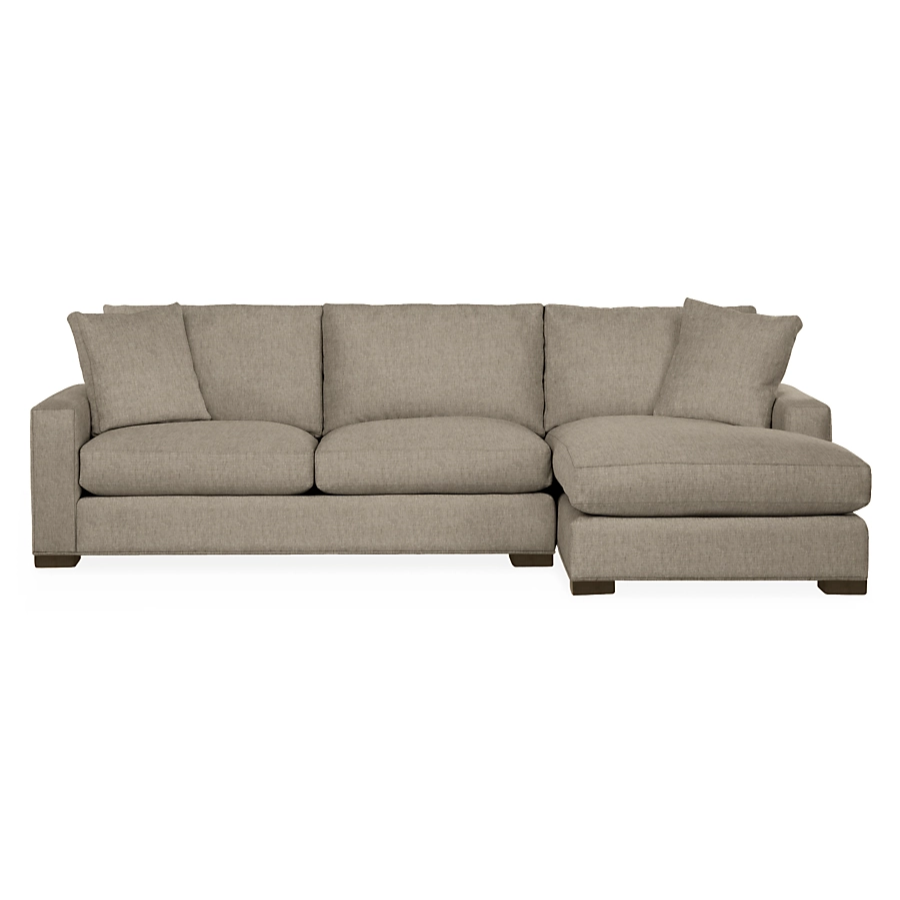
Price: $4100
Size: 112"w x 64"d x 27"h (34"h with cushion)
Room & Board gets a lot of praise from industry insiders and regular consumers alike. Louis Ramirez, one of my coworkers and the deals editor at Tom's Guide, recently told me that he purchased an R&B sofa 15 years ago that has withstood the test of time. "Delivery/setup was great (they handle everything for you)," he said, "and in general I'm a huge Room & Board fan. Expensive stuff, but it holds up really well."
Case in point: the best-selling Metro sofa, with a 4.5-star rating across 541 customer reviews. There is nothing overtly stylish about this piece, but it's functional and well-made for sure, with down-blend cushions and a hardwood frame. Worried about delivery? Room & Board listings include a "measuring for delivery" PDF, which walks you through best measuring practices ahead of your order.
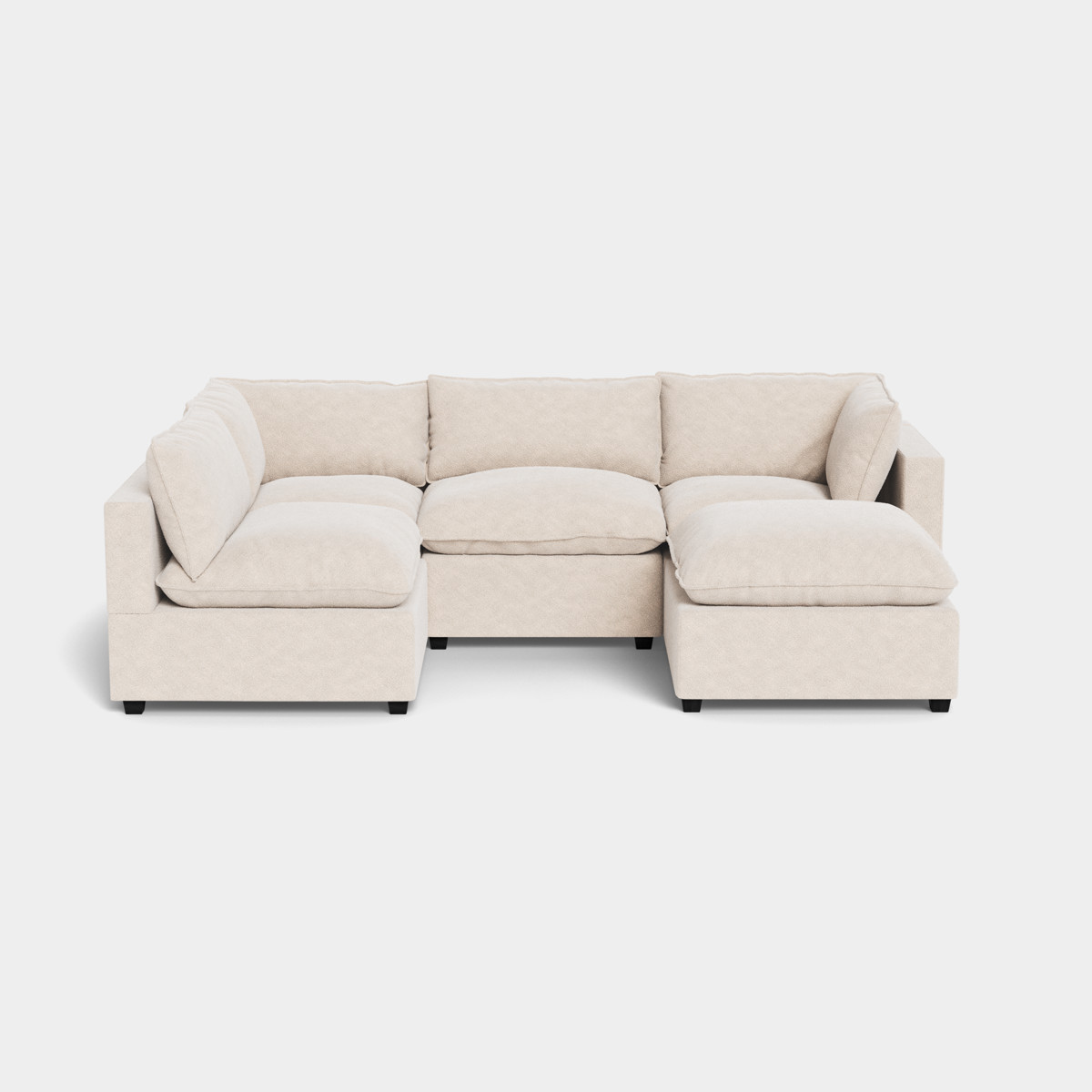
Price: $4745
Size: 122"W x 39"H x 79"D
Albany Park offers a total of five different sofa styles, each available as a loveseat, sectional, and armchair, plus matching ottomans. The direct-to-consumer brand has been on Livingetc's radar for a while, but we haven't had a chance to test any of its offerings. It's frequently mentioned on "best of" lists, however, so I included something — the Kova L-Shape Sectional and Ottoman — here.
Without my own first-person experience, I turned to competitor reviews to suss out the pros and cons. Editors at both Apartment Therapy and Refiney29 seem to love their customizable Albany Park sofas, though both mentioned the pillows/cushions do need a lot of fluffing. USA Today's Rachel Murphy, however, was less impressed, specifically when it came to assembly; in her experience, it was a two, maybe three, person job. She also mentioned that the cushions arent upholstered on both sides, so you can't just flip them for a easy refresh. Still, Albany Park sofas are quick ship, relatively simple to clean, and come with a lifetime warranty, so they might be right for what you need.
Is it a good idea to have a sofa and a sectional together in a room?
"Both styles of sofa can be used in a room together. However, it comes down to how big your room is and the location of the sofas," says Silvia. "If I've specified either a sectional or a sofa, I will combine this with a couple of armchairs to provide flexible seating options, or team two sofas together."
A large living room allows for both these seaters to exist together and even increases the functionality of the room. In a luxury living room, you could create two seating systems – a formal one with sofas, armchairs, and ottomans, and an informal one with a sectional and stools.
"Do keep in mind that when planning a layout, it's important to have adequate seating and different types of seating," says Victoria Holly, principal, and founder of Victoria Holly Interiors.
"I like to have at least three types of seating, such as a sectional or sofa, accent chairs, and then an ottoman. This is great for kids who want to play while watching TV. Having multiple types of seating also allows for breakout conversations as well as main conversations within the space."
The Livingetc newsletters are your inside source for what’s shaping interiors now - and what’s next. Discover trend forecasts, smart style ideas, and curated shopping inspiration that brings design to life. Subscribe today and stay ahead of the curve.

Brigid Kennedy is a freelance writer and former style editor for Livingetc.com, where she scoured the internet for the best and most stylish deals on home decor and more. She also served as the website's in-house sofa expert, completely revamping and reworking Livingetc's expansive sofa buying guide by interviewing a total of 17 interior designers and sofa experts at top brands like Article and Benchmade Modern; sitting on upwards of 50 sofas across both Pittsburgh and New York City; extensively polling her friends and family for their own sofa-buying anecdotes and product recommendations; and traveling to Dallas, Texas, to tour the floor of a couch factory. In total, she estimates she has spent 40+ hours (and counting!) reading, writing, and talking about couches with accredited sofa connoisseurs o then pass that knowledge on to you. She describes her personal design style as colorful and clean, and in her free time enjoys reading, watching movies, and curating impossibly niche playlists on Spotify. She recently relocated from Manhattan to Pittsburgh, Pennsylvania, where she's decorating and DIYing a new home downtown.